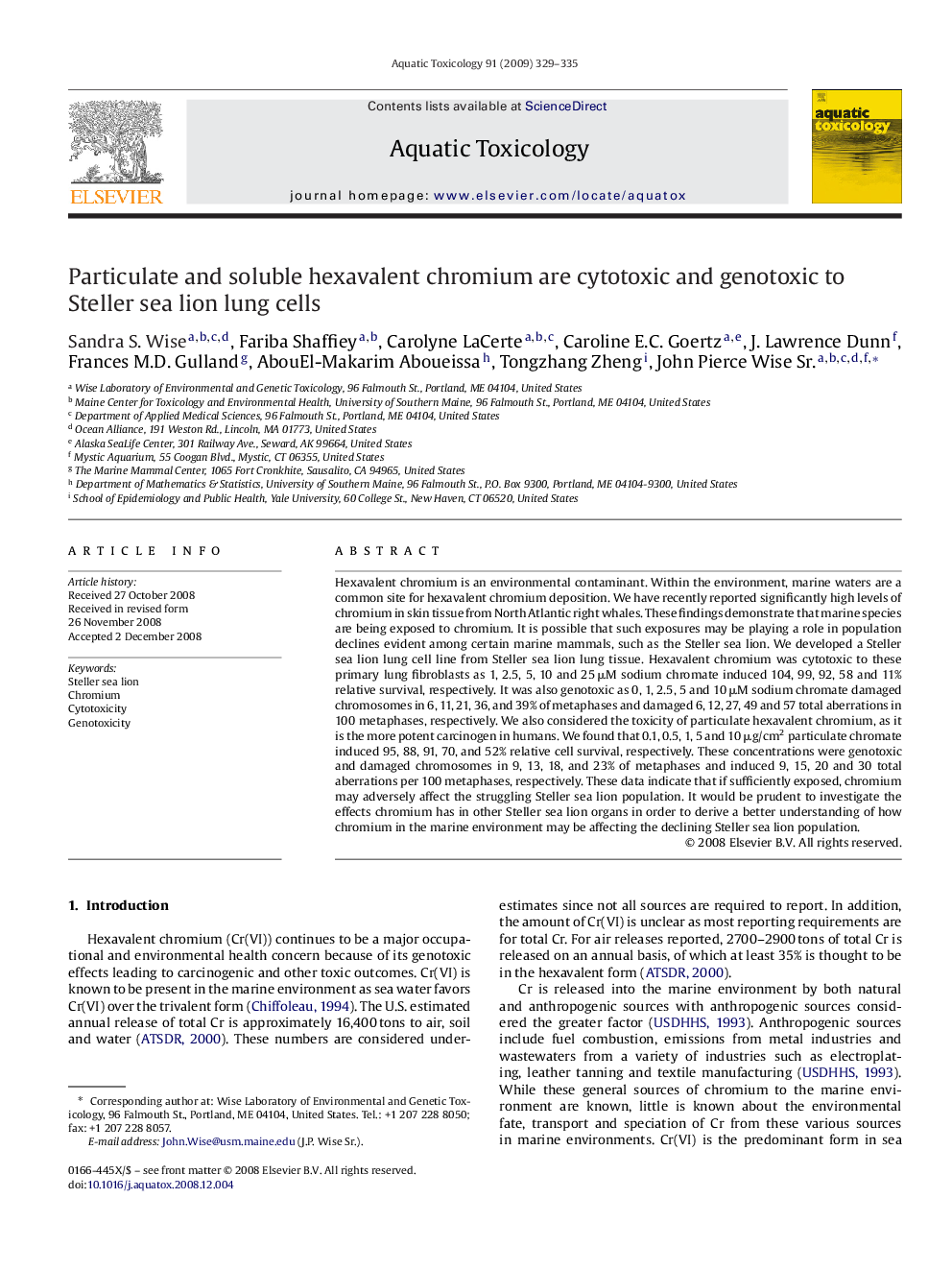| Article ID | Journal | Published Year | Pages | File Type |
|---|---|---|---|---|
| 4530290 | Aquatic Toxicology | 2009 | 7 Pages |
Hexavalent chromium is an environmental contaminant. Within the environment, marine waters are a common site for hexavalent chromium deposition. We have recently reported significantly high levels of chromium in skin tissue from North Atlantic right whales. These findings demonstrate that marine species are being exposed to chromium. It is possible that such exposures may be playing a role in population declines evident among certain marine mammals, such as the Steller sea lion. We developed a Steller sea lion lung cell line from Steller sea lion lung tissue. Hexavalent chromium was cytotoxic to these primary lung fibroblasts as 1, 2.5, 5, 10 and 25 μM sodium chromate induced 104, 99, 92, 58 and 11% relative survival, respectively. It was also genotoxic as 0, 1, 2.5, 5 and 10 μM sodium chromate damaged chromosomes in 6, 11, 21, 36, and 39% of metaphases and damaged 6, 12, 27, 49 and 57 total aberrations in 100 metaphases, respectively. We also considered the toxicity of particulate hexavalent chromium, as it is the more potent carcinogen in humans. We found that 0.1, 0.5, 1, 5 and 10 μg/cm2 particulate chromate induced 95, 88, 91, 70, and 52% relative cell survival, respectively. These concentrations were genotoxic and damaged chromosomes in 9, 13, 18, and 23% of metaphases and induced 9, 15, 20 and 30 total aberrations per 100 metaphases, respectively. These data indicate that if sufficiently exposed, chromium may adversely affect the struggling Steller sea lion population. It would be prudent to investigate the effects chromium has in other Steller sea lion organs in order to derive a better understanding of how chromium in the marine environment may be affecting the declining Steller sea lion population.
